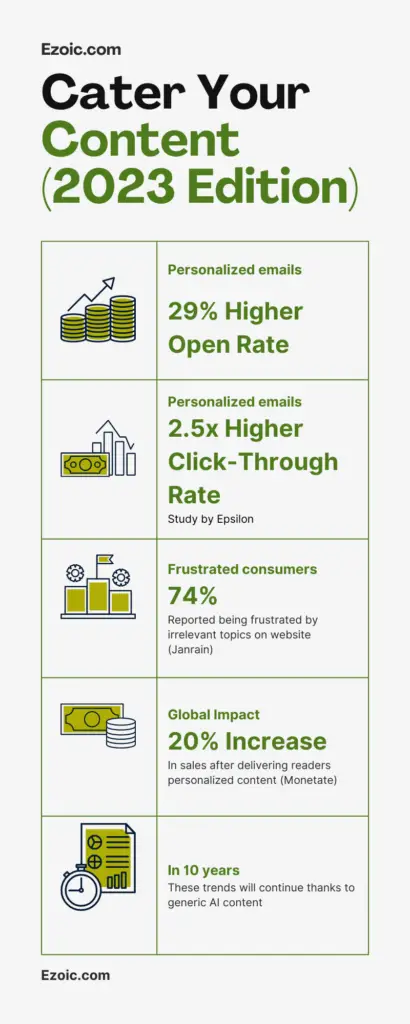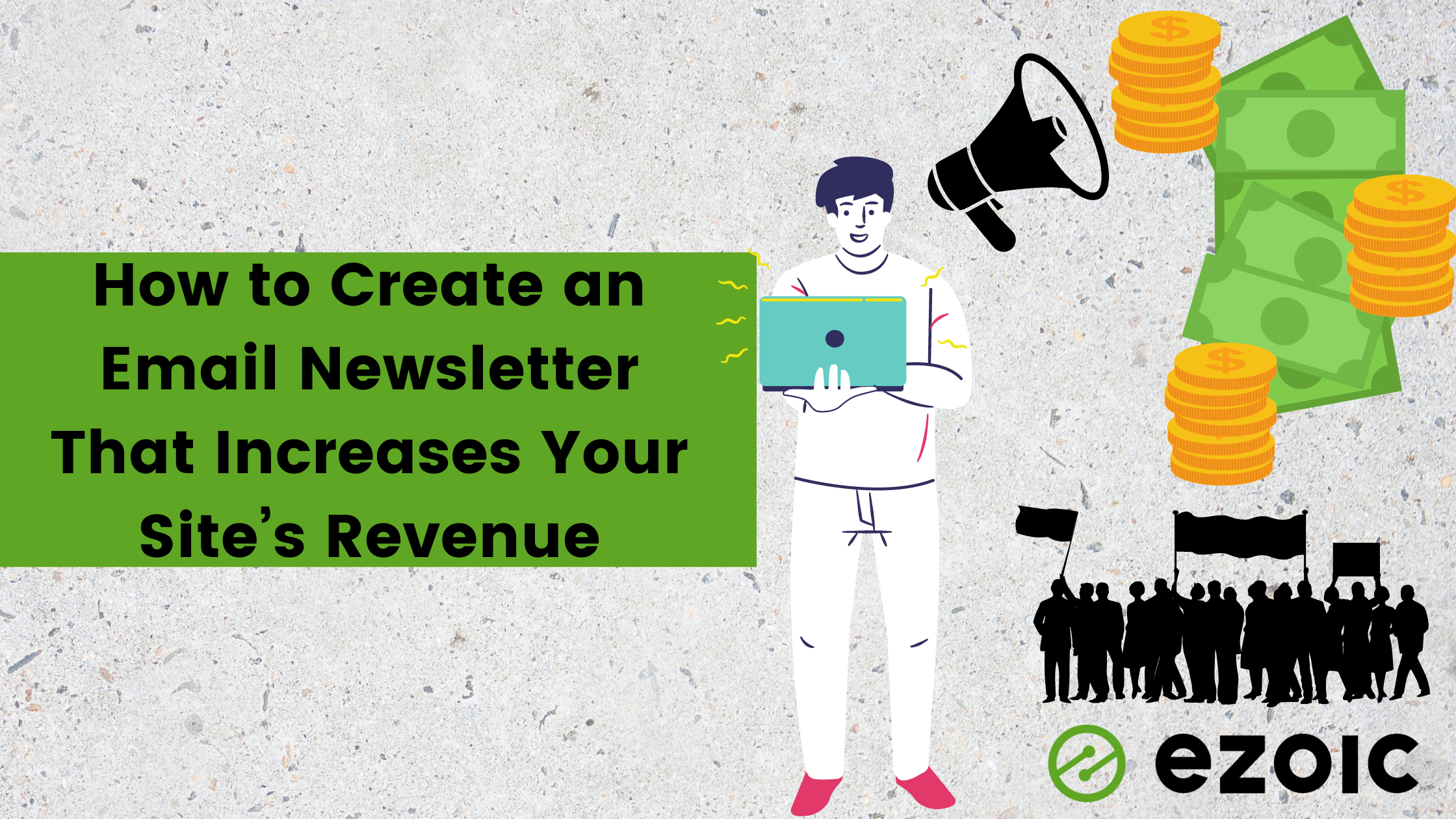Access to your audience’s email inbox is one of the most intimate communications possible. It’s the gold standard for followers. If you can create an email newsletter that people want to read — they’ll read it.
According to Optin Monster, “99% of email users check their inbox every day, with some checking 20 times a day. Of those people, 58% of consumers check their email first thing in the morning.” Plenty of recent studies show that most users check their email inbox far more than the plethora of social media channels they use. Content creators of every industry often prioritize building a large social media following, but there are usually far more reasons to build a strong email list, including:
- All social media users only need to click a simple “follow” button to become someone’s follower; signing up for someone’s email requires a conscious choice to give someone access to your private email inbox — a huge leap of trust.
- People check their email inbox far more than social media.
- You have total control over your email list; social media companies can (and often have) abruptly ban and shut down countless content creator’s pages and took away all their followers overnight.
- You are not fighting against social media algorithms and you can message 100% of your subscribers whenever you want.
- Email subscribers are vastly more likely to become a paying customer than simple social media followers.
Of course, creating a dynamic and highly-anticipated email newsletter is difficult; in most industries a 20% open-rate is about the norm. Here, you’ll learn how to craft a consistently great email newsletter that increases your site’s revenue, traffic, and authority.
Email Newsletter Rule #1: You Can’t Be Boring
I was able to build an email list of over 125,000+ subscribers in just under three years. I was also able to build my open rates up to a very high open-rate average of between 35% and 40%. Through this list, I was able to build a 6-figure content creation business, where I constantly got messages every week from countless readers telling me how much they liked my content, messages, and particularly: my emails.
The key? Don’t be boring. The average email user is subscribed to a ton of email newsletters from companies, content creators, and causes they care about, getting dozens of emails a week from them — you are fighting against countless other emails in your audience’s inbox. If you’re boring and just the same as 99% of their other emails, you’ll probably have significantly lower open rates. The average person has multiple email accounts, and these accounts are subject to hundreds of emails a month from thousands of companies all vying for attention.
I was able to cut through the noise and email clutter by being truly vulnerable and authentic in my emails. Yes, I was doing the same things every other email newsletter was trying to do: promote content, sell stuff, and keep readers engaged. But interwoven through every message was refreshing, sometimes brutal honesty about myself and my field.
One of the biggest reasons why Anthony Bourdain’s massively popular book Kitchen Confidential sold so many copies wasn’t because Bourdain printed out yet another recipe book. He peeled the cover off the food industry in a way no one ever had, divulging secrets and revealing the hard truths about the food industry in ways the average reader would find extremely interesting. He revealed why you should never order seafood soups on Mondays (it comprised of leftover, slightly rotten foods restaurants didn’t sell over the weekend) and how you could always avoid being served old french fries by asking for an order without salt (forcing the fryers to make a fresh batch).
It was honest, vulnerable, even self-incriminating. There was massive criticism by other chefs, mad at Bourdain for “spilling their secrets.” But it was all true, massively interesting, and irreproachable by an actual industry insider.
Don’t be boring with your email newsletter. Leverage your own expertise and insider information to deliver interesting value to your audience.
Email Newsletter Rule #2: Create a Soap Opera Story to Hook Readers From the Beginning
As we’ve said before on this blog, “Your hottest leads are going to be subscribers who have just opted into your email list. These are people who have just decided they want to learn more about you, and are primed to hear your story and message, even potentially buy a product on the spot.”
Connecting with subscribers is the easiest when they first subscribe, as they’re primed to hear more about you (they’ve just decided to give you their email, and are waiting to see if they made the right choice by allowing you into their inbox). You can’t just send out generic, sales-y headlines designed to squeeze every sale out of your inbox; studies show that the most-opened emails are meticulously curated and tweaked to sound as human and personal as possible.
One of the most effective and simplest ways to connect with them? Tell them your story. But not just through any way — through a soap opera story complete with characters, drama, and victory.
See our other blog post for a full breakdown of this email story sequence, but the concept is simple: much like comic superheroes, every content creator from every industry has an origin story. Your audience wants to know who you are, why you’re qualified, and what you stand for. That way, they’ll be pulled beyond a simple information-transaction with your content and actually be invested in you and your message.
Some content creators might think their story isn’t that exciting, or that their field is too dry and objective to successfully integrate a personal story. This isn’t true. Even if your audience is coming to your site for information as basic as home decor or cryptocurrency advice, they want to know who is giving them the information. There are millions of websites in your industry; they’ll choose your site out of the lot because you’re the one they connect with.
Catering your email newsletter content is another great strategy; here’s an infographic we’ve made on the same topic:

Email Newsletter Rule #3: Incorporate Income and Revenue Strategies Into Your Emails
Email newsletters lend themselves very well to income streams and revenue sources, their massive ROI has been well-documented, with earning potential of $30-45 dollars for every dollar you spend. You can implement affiliate links, promote optimized content, pitch new products, and remind readers about upcoming events that your site is having. The best emails are able to blend high-quality and authentic content with relevant income streams, and you should focus on both for your newsletter.
If you study your field’s top content creators and influencers, you’ll invariably see they promote several income streams in addition to their ad-revenue from their content. You can see a great list of non-ad-related income streams from our blog; focus on building one or two to start and grow from there. The most lucrative websites are able to seamlessly incorporate multiple income streams into their content, which includes your email newsletter.
In Conclusion: Email newsletter work isn’t easy, but if you follow a plan, you can be successful
Creating a dynamic, interesting email newsletter isn’t easy; there’s a reason why industry averages for email newsletters are so low.
But if you can separate your email newsletter from the competition, you can build massive revenue through savvy income stream strategies and high-quality personal engagement between you and your fans. Focus on being authentic and honest, making genuine opportunities for your audience to gain value beyond just your information and fully buy into your message through telling a compelling story in your newsletters.
Crafting a great email newsletter isn’t just another box to check off for your site’s success; it’s a real way to connect and engage with your audience, giving them more value than a simple blog post ever could.
Check out these blogs below for more relevant content on email!


